Regular readers will know that I love the Guildhall Art Gallery! It describes itself as one of the City’s best kept secrets and that certainly seems to be true since when I visit I often feel like I almost have the place to myself.
This week I popped in to see what was on display with particular reference to London. My usual favourites were there along with some interesting new additions.
Among the new arrivals was this painting by Doreen Fletcher (b.1952) 0f the Carlyle Hotel, Bayswater, around 1981 …
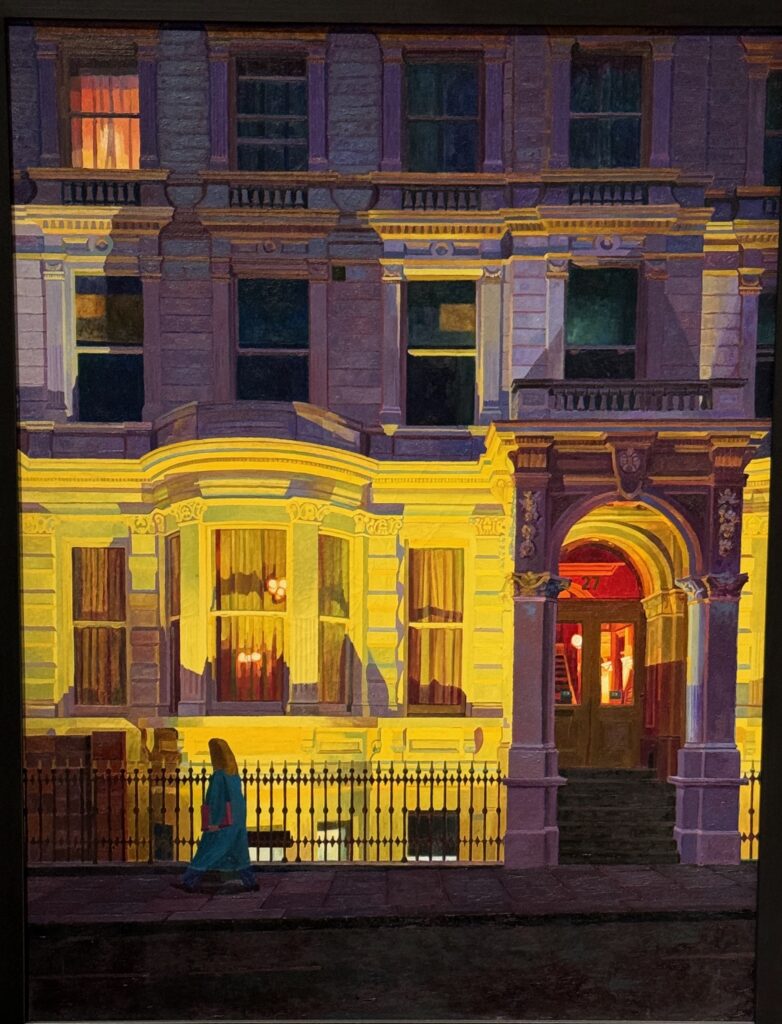
I think her paintings are fabulous and I am the proud owner of a signed copy of a book about her work published by The Gentle Author. I also own two of her prints, Still Standing – Commercial Road …
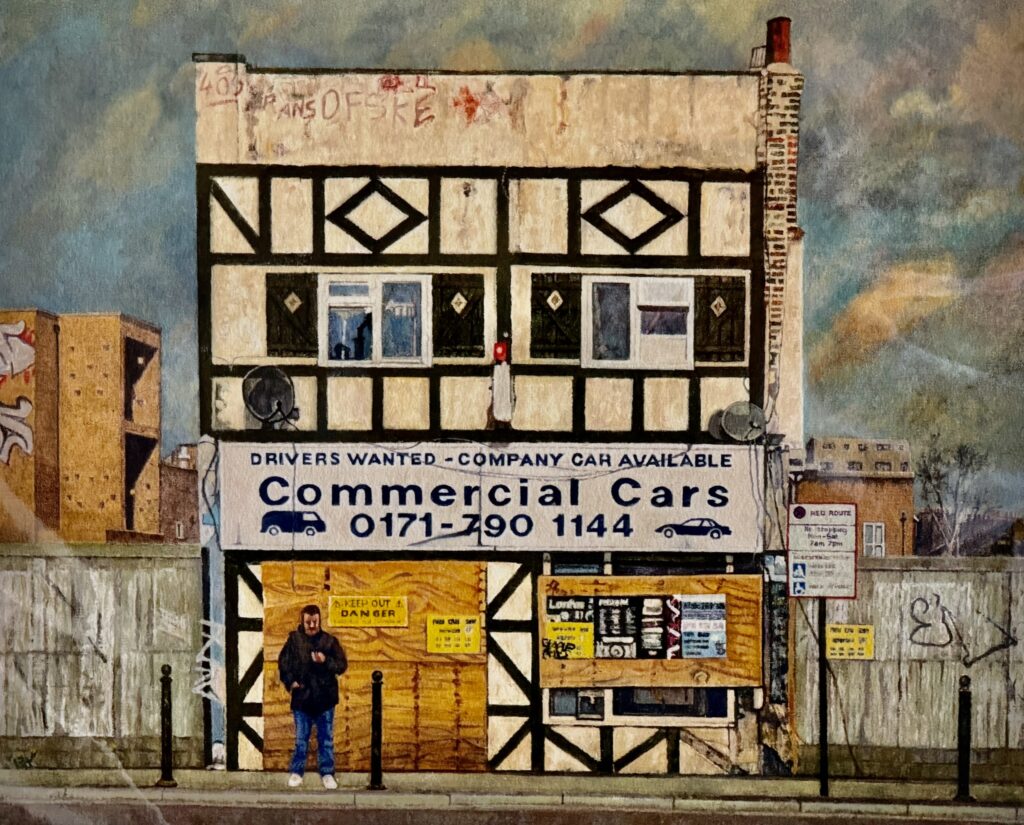
And Hot Dog Stand, Mile End …
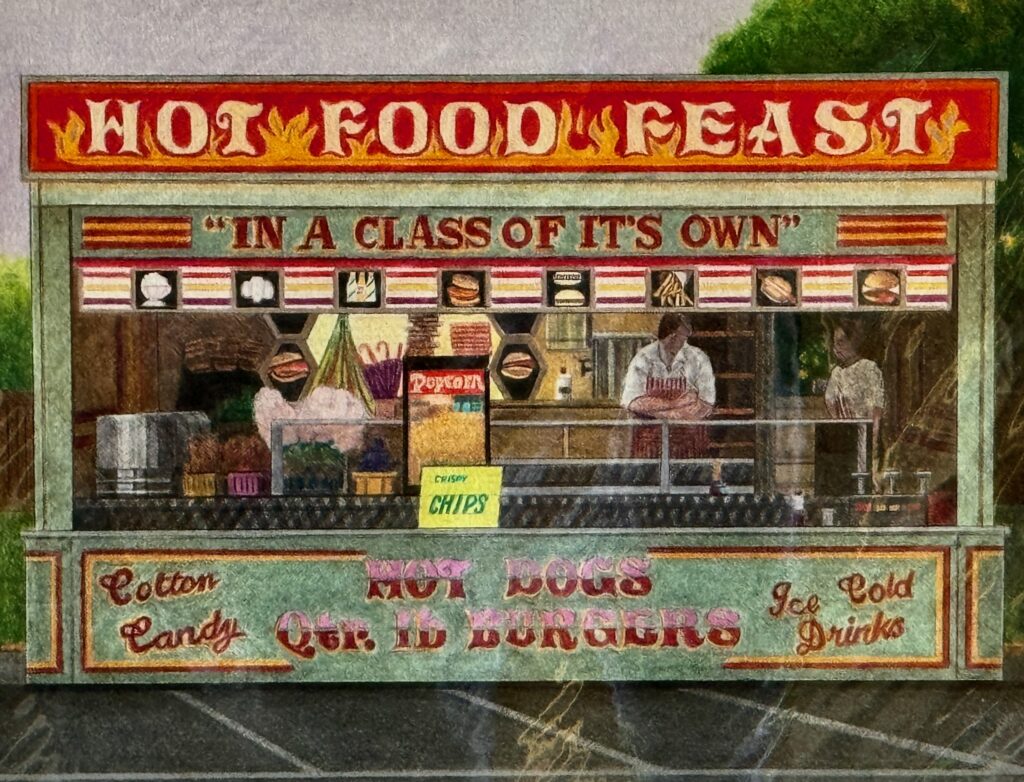
You can read more about her here and here. The book I own is now out of print but you may be lucky and find a copy on eBay.
Another new arrival at the Gallery is this work by Grete Marks (1899-1990) entitled London Wharves (1972) …
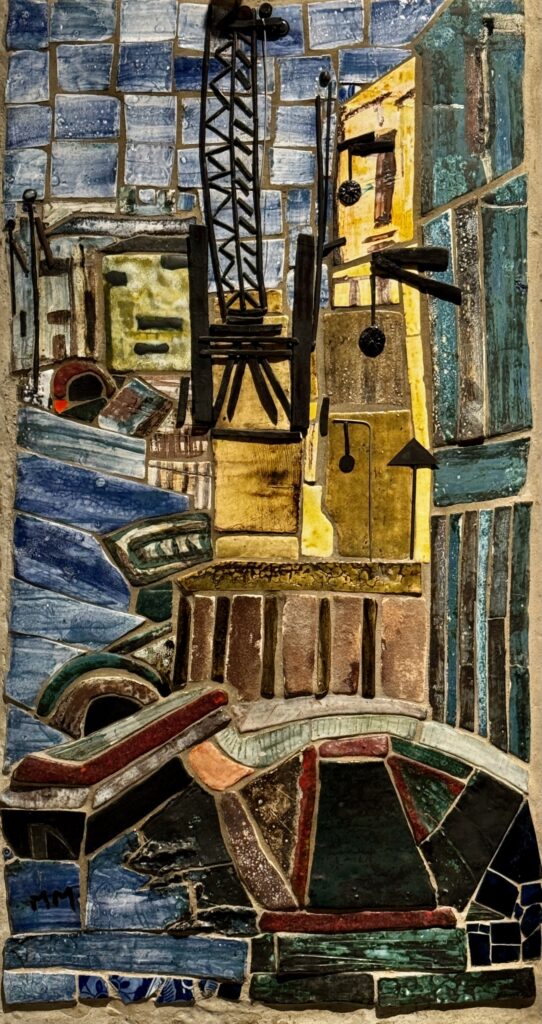
I really like the textures of the material she has incorporated …
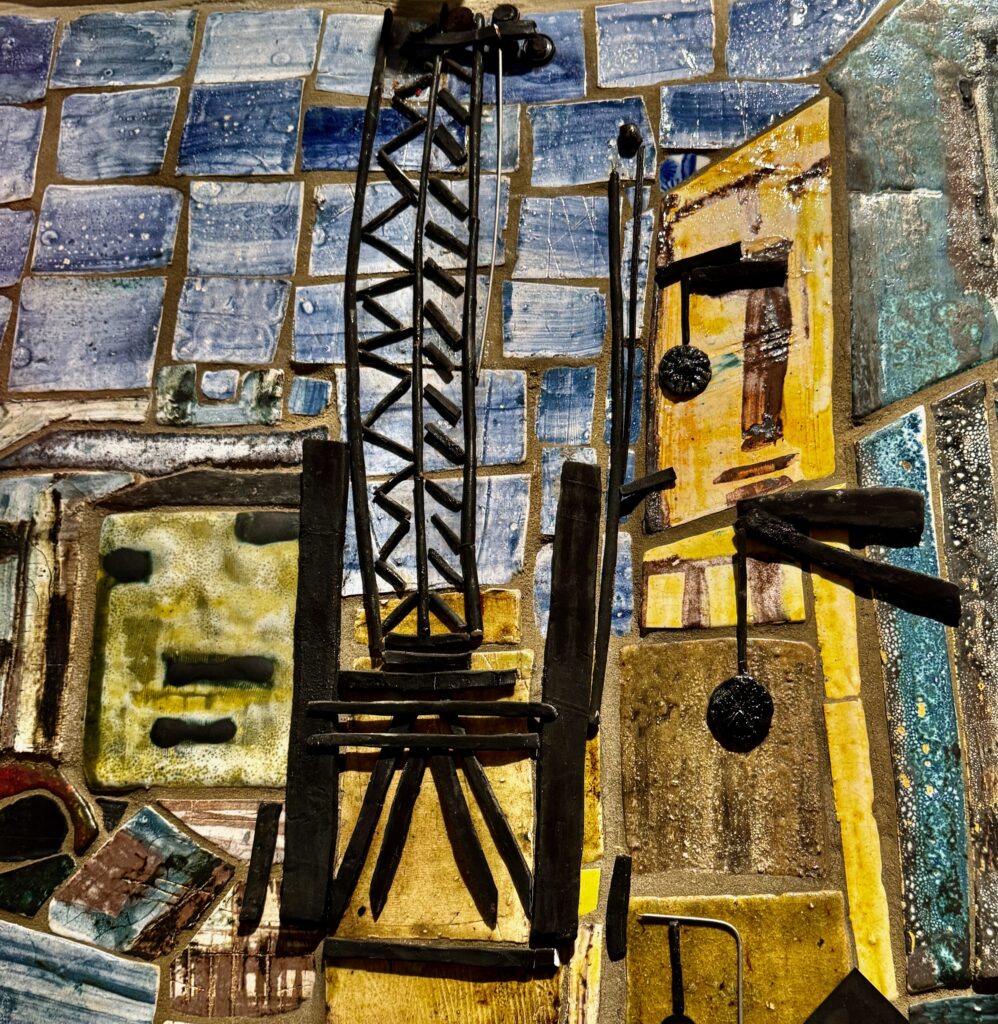
Margarete or Grete Marks was born in Cologne, Germany, where she studied at the School of Arts and later at Dusseldorf Academy before entering the Bauhaus School of Arts in Weimar in November 1920. At this time the Bauhaus was in its first incarnation under Walter Gropius and enjoyed enormous influence over the fine and decorative arts throughout Europe.
A painting by Sharon Beavan (b.1956) entitled View from Rotherfield Street to the Barbican (1989) …
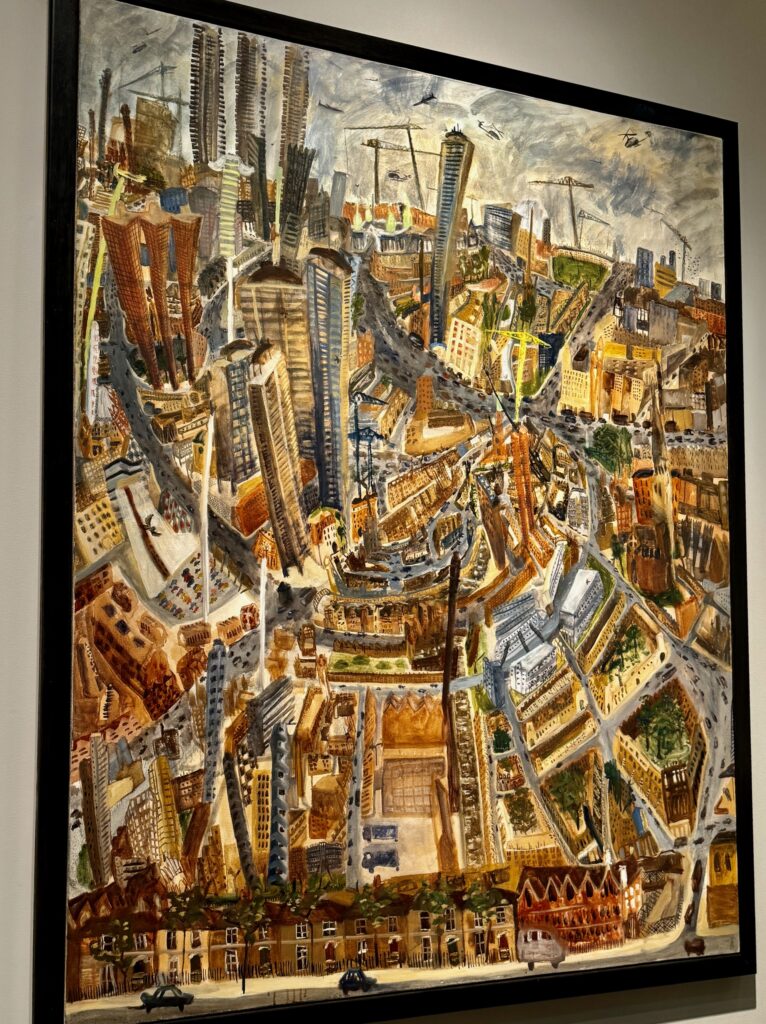
I really get a sense of the higgledy piggledy that is London. You can read more about Sharon here.
Another newcomer I like is this oil on canvas Camberwell Flats by Night (1983) by David Hepher (b.1935) …
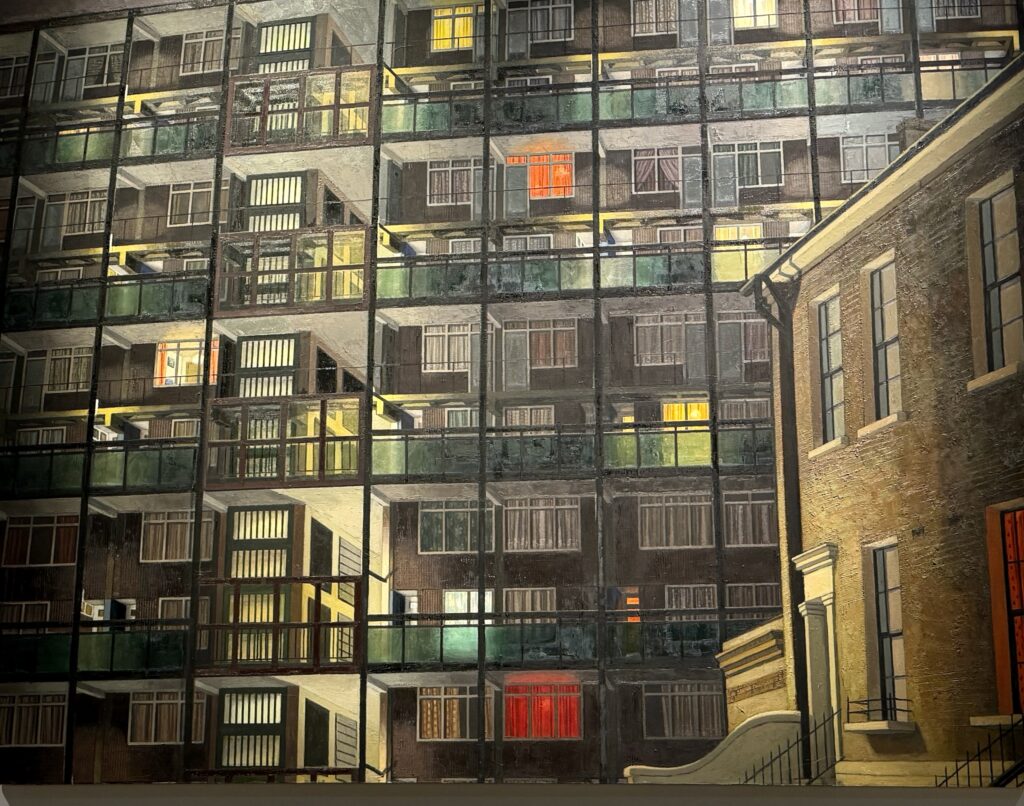
Hepher first started painting South East London’s high-rise architecture in the 1970s, inspired by the scale and impact of the tower blocks on the London skyline. Camberwell Flats by Night reflects Hepher’s sustained focus on residential architecture, and the details of ordinary, everyday life. He refers to his architecturally-themed works as landscape paintings, equating the powerful effects of the built environment on human experience to those of the natural world. He has said, “I think of myself as a landscape painter; I live in the city, so I paint the urban landscape.”
The Gallery acquired the painting in 2022 and it required some conservation. You can read about what that entailed here.
I looked up a few old favourites as well.
Two examples of City pomp and ceremony.
First, The Ceremony of Administering the Mayoralty Oath to Nathaniel Newnham, 8 November 1782. Nathaniel Newnham (before a sugar-baker and a founder of the private bank of Newnham) became Lord Mayor in 1782 and is seen here in his black and gold state robe being admitted in Guildhall on November 8 in the Silent Ceremony …
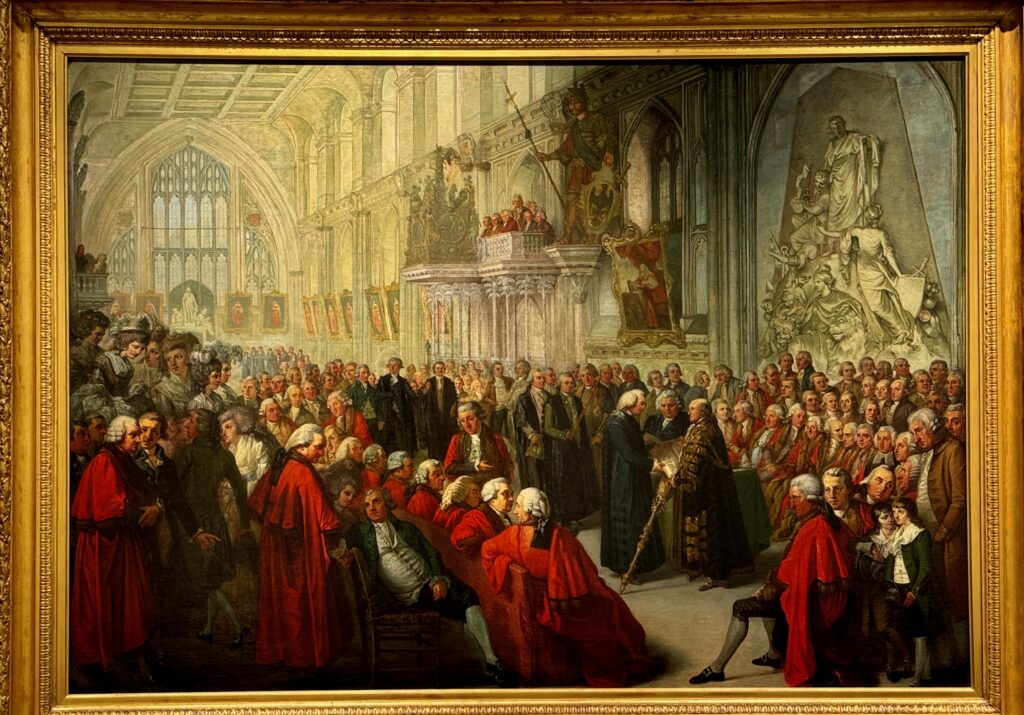
He faces William Bishop, the Common Cryer, who holds the book from which he reads his Oath with William Rix, the Town Clerk; behind stands Heron Powney, the Sword Bearer with the upraised Sword of State and beside him is William Montague, the Clerk of the Chamber of London …
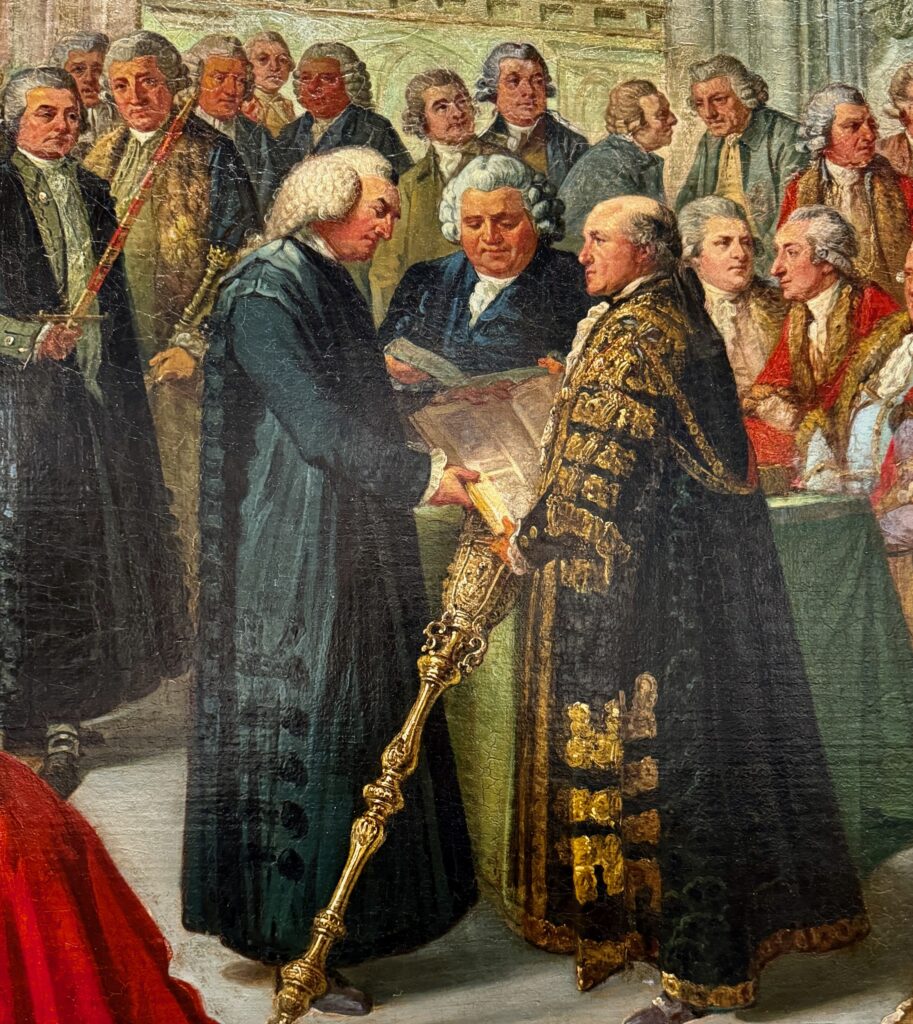
The two small boys at the bottom right are nephews of the Lord Mayor …
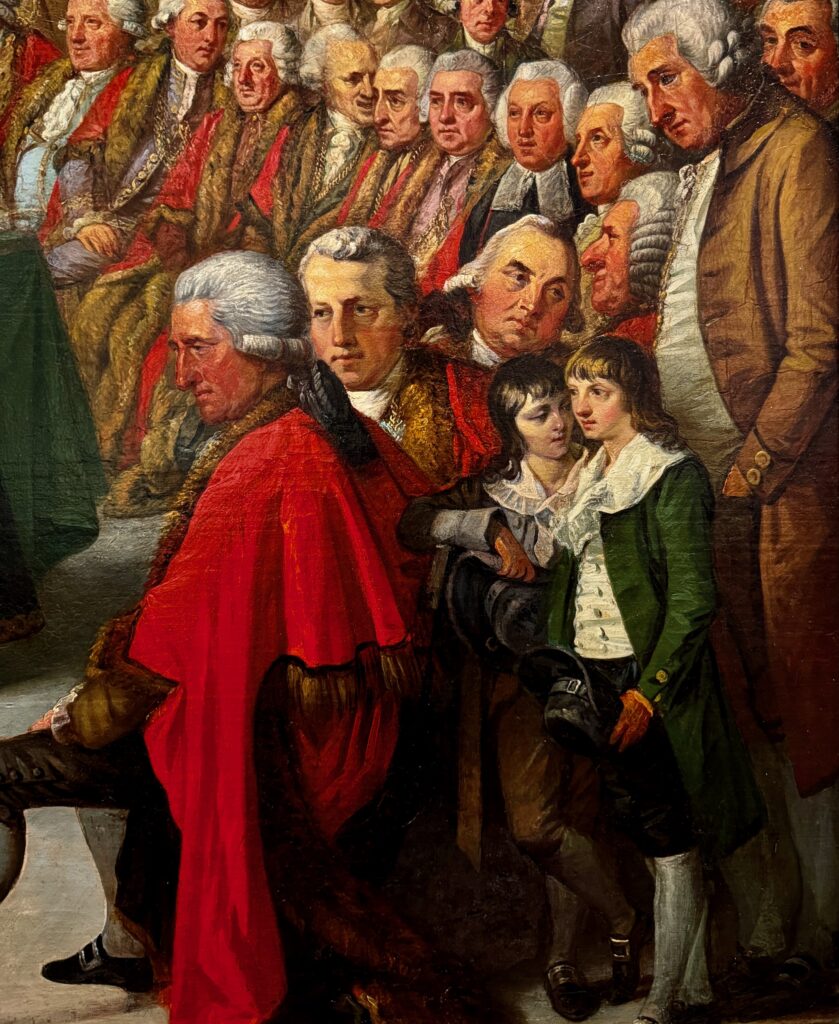
The other is one of my favourites, William Logsdail’s painting entitled The Ninth of November 1888 …

Although it’s the Lord Mayor’s procession in this picture he is nowhere to be seen and the artist has concentrated on the liveried beadles (who he actually painted in his studio)…

… and the people in the crowd …

There is a minstrel in blackface with his banjo and next to him a little boy is nicking an orange from the old lady’s basket. On the right of the picture the man in the brown hat, next to the soldier with the very pale face, is Logsdail’s friend the painter Sir James Whitehead.
Naughty boy!

It’s a sobering thought that, not far away in the East End that afternoon, police were discovering the body of Mary Kelly, believed to be the last of Jack the Ripper’s victims.
A view of Blackfriars Bridge and the City from Lambeth about 1762 by William Marlow (1740-1813) who was, as can be seen, very influenced by Canaletto. The City’s wharves are viewed through the Portland Stone elliptical arches while St Paul’s stands out in the background. At the north end are the buildings of New Bridge Street and the spire of St Martin Ludgate. In the centre of the picture, a wherry conveys passengers and their belongings downriver …
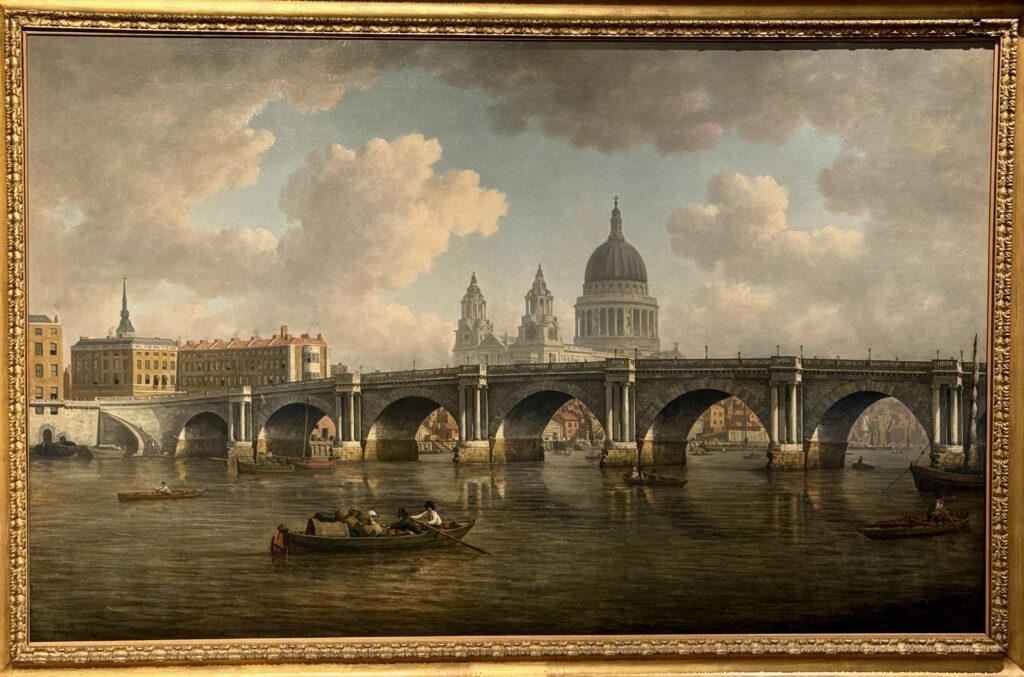
The demolition of old London Bridge increased the flow of the river under Blackfriars Bridge, weakening it. It therefore had to be replaced with the current iron and granite bridge built between 1860 and 1869.
The Thames and Southwark Bridge in 1884 by John Atkinson Grimshaw (1836-1893) are represented here on a quiet night under the moonlight. St. Paul’s prominent dome is seen on the right side, along with the spires of St Augustine, St Mary-le-Bow and St Antholin. A few vessels are in the dark on the left. The river and the sky are open pathways for the flood of light …

John Atkinson Grimshaw began working as a railway clerk for Great Northern Railway and had no formal training. Despite parental opposition, he took up painting at the age of twenty-five. In the 1880s, he began to paint London views, concentrating on moonlight subjects. From 1885 to 1887 Grimshaw had a studio at Trafalgar Studios, Manresa Road, Chelsea and knew Whistler well. It is said that Whistler confessed he had regarded himself as the inventor of nocturnes until he saw Atkinson Grimshaw’s ‘moonlights’.
The Monument from Gracechurch Street after Canaletto (artist unknown). We are looking towards Fish Street Hill and old London Bridge, with the Church of St. Magnus the Martyr in the background. Many reproductions were made after Giovanni Antonio Canal, who was colloquially known as Canaletto. These were in high demand after various British nobles and even King George III started collecting them …

This painting shows the wide thoroughfares of eighteenth century London and the bustle of the city. The Monument, designed by Dr Robert Hooke and the architect Christopher Wren, was erected between 1671 and 1677 to commemorate the fire and the rebuilding of the City.
Finally, if you visit the Gallery now you will see a notice about the Lord Mayor’s Big Curry Lunch …
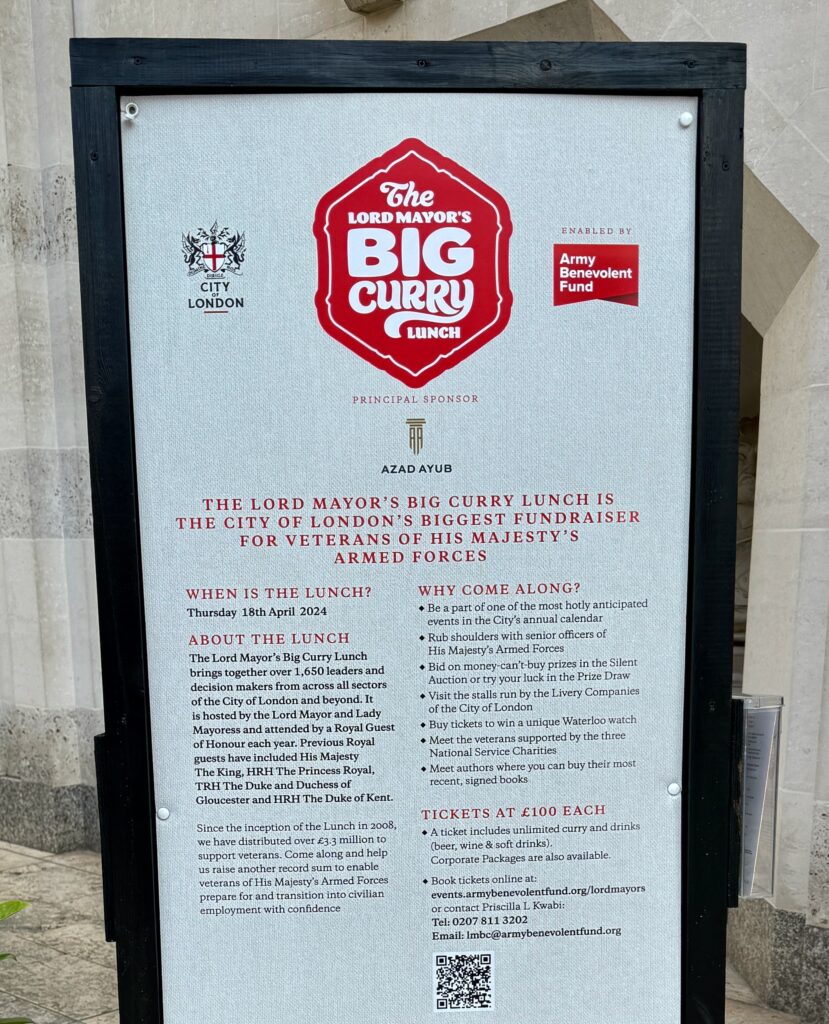
and the nearby garden …
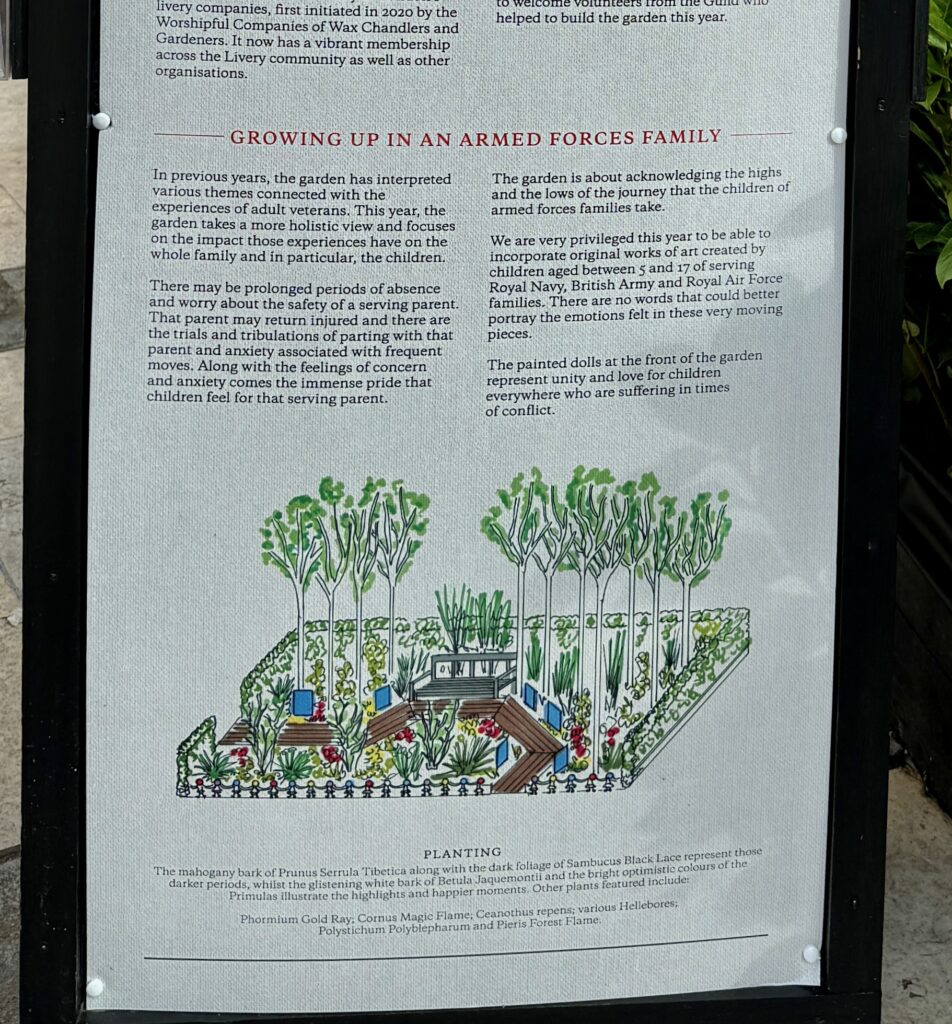
It’s really nice to see some green space in the Guildhall courtyard …

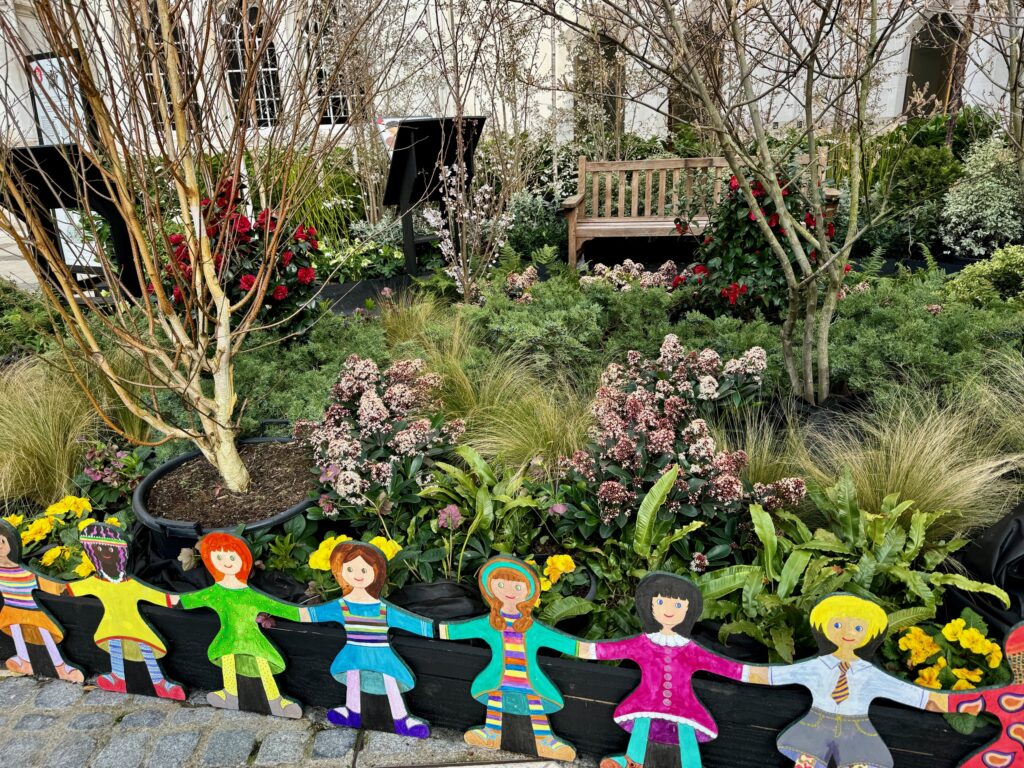
And art by the children of serving families …
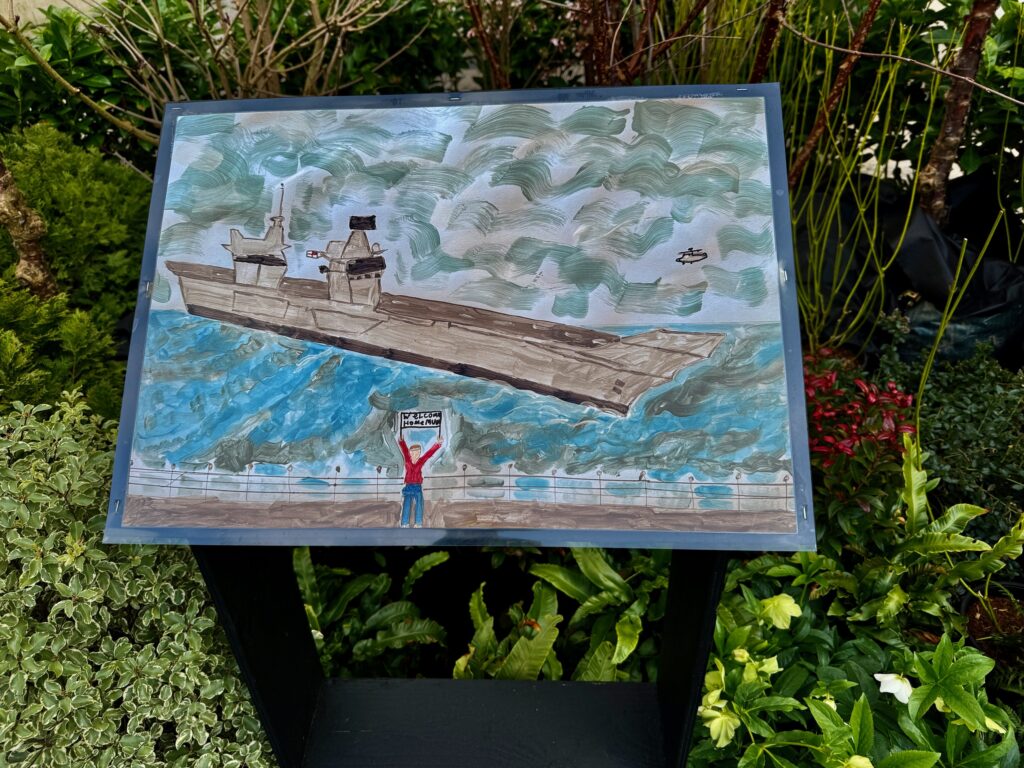
As the notice says, the painted dolls at the front of the garden represent unity and love for children everywhere who are suffering in times of conflict …
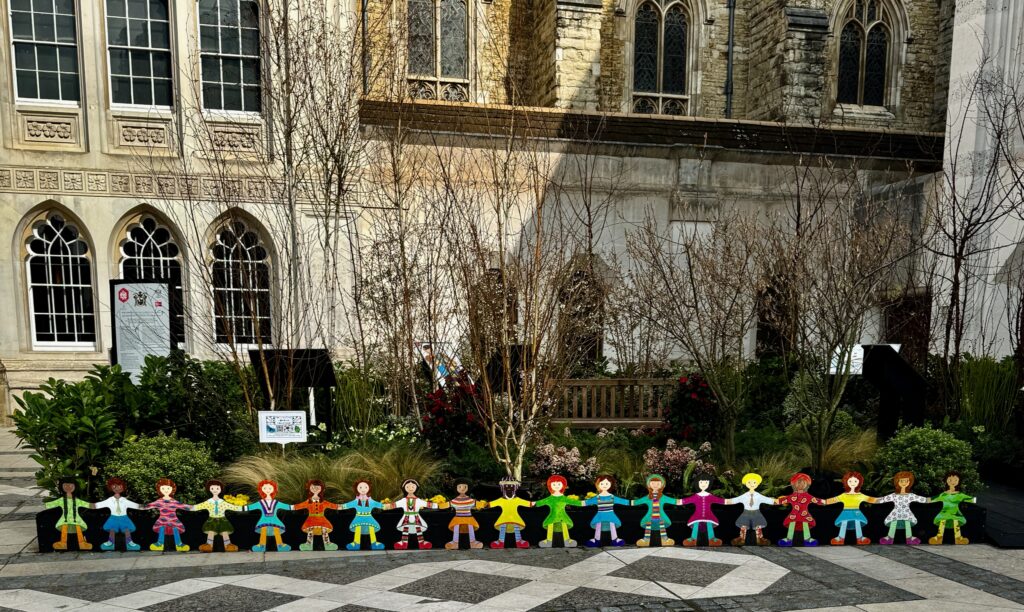
Oh, and by the way, one of Gallery’s most popular paintings is back on display after being featured in Tate Britain’s ‘The Rossettis’ exhibitions in London and the Delaware Art Museum. Described by the Pre-Raphaelite artist and poet Dante Gabriel Rossetti as “my very best picture”, ‘La Ghirlandata’ was acquired by the City of London Corporation in 1927 for its permanent art collection and is displayed in the gallery’s main Victorian exhibition space …

The 1873 oil on canvas depicts ‘the garlanded woman’ playing an arpanetta and looking directly at the viewer. The artist’s muse for the central figure was the actor and model, Alexa Wilding, with two ‘angels’ in the top corners posed by William and Jane Morris’ youngest daughter, May Morris.
Remember you can follow me on Instagram …
